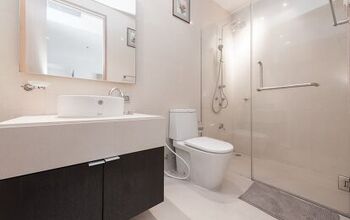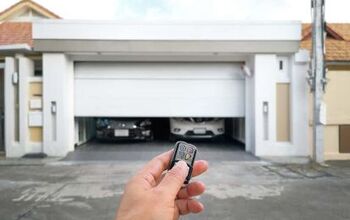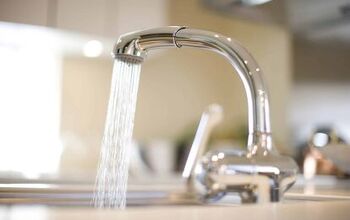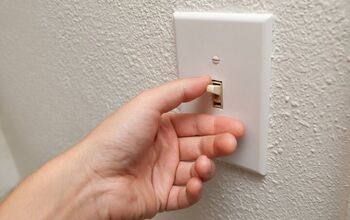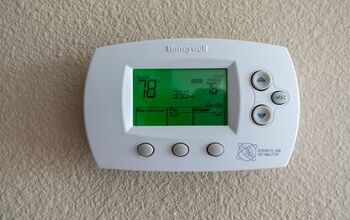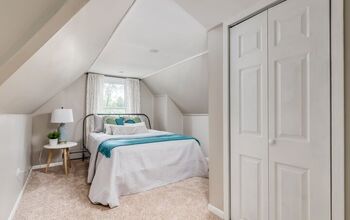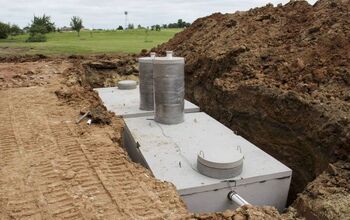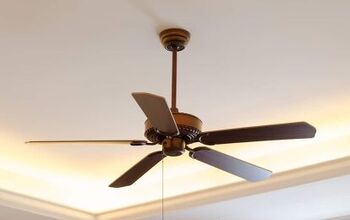Conquer Clutter Chaos: 8 Common Clutter Zones And How To Fix Them

It’s not you, it’s your stuff being sneaky. You might be the most organized person in the world, but there are still places in your home that seem to breed clutter. Don't panic; everybody has these sneaky clutter spots, but the good news is that once you’re aware of them, you can conquer them.
Sneaky clutter zones include the entryway, kitchen countertops, bathroom vanities, closet floors and shelves, and nightstands. Flex spaces, like home-office-guest-rooms or living-room-playroom combos, also tend to collect clutter. Flat surfaces, including the floor, are other famous clutter magnets. The right systems and routine tidying help keep these areas clutter-free.
Here are eight of the most common clutter zones in homes and how to handle them, so you can reclaim your space (and your sanity).
1. The Entryway (Where Everything Seems To Stop And Stick)
You get home from a busy day of work, drop your keys, kick off your shoes, and toss the mail onto the closest surface. Kids bring more clutter to the party — they unload heavy backpacks, shed jackets and hoodies, and leave their shoes in the middle of the floor.
You’re not alone. Pretty much everybody is anxious to relax and can’t wait to get rid of all the things that were weighing them down all day. The result is anything that comes into the door with you lands there and stays there, piling up until someone (probably you) does something about it.
In the meantime, you deal with missing shoes, lost keys, forgotten mail, tripping toddlers, and other hassles. Plus, the mess ends up greeting you every time you come home, which is the opposite of relaxing. So, how do you conquer a cluttered entryway?
You Need A System And Proper Storage For Your Entry
Create a landing zone with designated areas for specific items and people. Wall-mounted hooks are great for purses, coats, dog leashes, hats, etc. A bench with storage is a great place to stuff bulkier bags and items, and it provides a place for people to sit and remove their shoes.
A decorative basket with a removable liner that’s easy to clean is a great place to toss shoes and keep them all under control. Or you can opt for a tilt-out shoe rack or bench. Choose a solution that makes the most sense for your family. Make the system easy, so everyone will follow it and stick to it long term.
2. Kitchen Counters (And Islands)
The kitchen is usually the heart of the home, which means a lot of people end up hanging out there. This is great for family bonding time, not so much for clutter control. When everyone tends to gather in one spot, a lot of stuff collects.
The kitchen counters, especially the island, end up being drop zones for mail, homework, chargers, and other random odds and ends. Add these miscellaneous items add to all the kitchen gadgets battling for space, and you get a continual stream of clutter.
Collect And Contain Kitchen Clutter
If you don’t use it every day in the kitchen, it goes away inside a cabinet or pantry. Things like air fryers, steamers, and other small appliances shouldn’t live on countertops unless you use them daily. Maximize vertical space inside cabinets, on the back of doors, and in the pantry with shelves, hooks, lazy Susans, and other storage solutions to organize your kitchen items.
When it comes to non-kitchen things, have a system for returning things to their proper places. For example, if mail tends to collect on the island, keep a pretty basket there, so it’s all contained. When it gets full, sort and deal with the mail.
If the kids do homework in the kitchen, set up a station for them and dedicate a drawer or basket for their supplies. Add a tilt-out tray under the island counter or consider stools with storage inside. Get creative with your clutter control and take a few minutes each day to return items to their proper places.
3. The Junk Drawer
Every home usually ends up with a junk drawer, and there’s nothing wrong with that. It’s great to have a drawer where all the miscellaneous items can go, like tape, scissors, rogue batteries, and mysterious chargers.
But that doesn’t mean everything needs to be thrown into the drawer haphazardly. And you definitely don't need more than one.
Only One Junk Drawer Allowed
Empty the junk drawer and sort items by category. Toss duplicates, things you don’t use, broken items, etc. Get a drawer organizer to keep things from jumbling all together into a chaotic pile.
Label the different compartments, so everyone in the home knows where things go. Routinely go through the drawer to keep it in check.
4. Bathroom Cabinets And Counters
Product samples, half-filled bottles of lotion, shampoo bulk buys, and make-up overload lead to cluttered cabinets and vanities. Sometimes, it's a matter of poor organization, so you can't see what you have and buy more. Other times, it's buying too much because you hop on the latest skincare trend before you're finished with the previous ones.
Focus On Streamlining Your Routine
Purge unnecessary items, expired products, and anything you don't use. Organize the rest in accessible containers. Use clear bins or label containers clearly to make finding what you need a breeze.
Place the items you use daily in a caddy or tray to make your getting-ready routine seamless. You'll be amazed at how much time you save.
5. Nightstands
Bedside tables are notorious clutter collectors. They end up holding books, medicine, pens, glasses, chargers, hair ties, lotions, you name it. It certainly makes going to bed and waking up a little more hectic.
Get A Nightstand With Storage And Embrace The Rule Of Three
Look for nightstands that offer storage. If your bedroom is small and you prefer a sleek, minimal style, at least go with something that offers a drawer or shelf. Keep necessities hidden, like medications, and limit the items that live on top of your nightstand to three.
For example, a book, picture frame, and lamp, or if you have floor or wall lamps, your bedside table could hold a vase, your latest novel, and a clock. If you remove jewelry before you go to bed, keep a small tray on your nightstand to corral pieces. When styling your nightstand, aim to keep at least 25% of it clear.
6. Flex Spaces
Rooms that serve different functions can end up cluttered over and over if there's no clear system. A home office that acts as a guest room, a living room that doubles as a playroom, or a dining room that's also a library makes it hard to get rid of clutter.
Have A Plan And Create Zones For Each Purpose
Be clear about what a room's purposes are and create zones and storage systems for each function. Have a plan for how and when a room transitions from one use to another. The right organizers, limiting stuff, and making sure everyone in the home is on board with the process are vital components to tackling clutter pile-ups.
Where possible, utilize rolling or portable organization systems, so you can completely remove certain pieces when necessary. For example, a rolling cart that holds office supplies could hide out of sight in a closet when the room goes into guest mode.
7. Closet Floors And Shelves
A cluttered closet might just need a pare-down, but the sneaky clutter zones tend to be the floor and shelves, especially when these spaces are hidden by hanging items.
How many times do you shove a bag of purchases into the closet because you're in a rush and decide to deal with it later? The problem is, later never comes, and more stuff gets shoved into the closet’s nooks and crannies.
Maximize Closet Space And Get A Big Basket
Take full advantage of the space in your closet by using things like double rods, side shelves, hooks, and door organizers. Hang items you don't wear often on the rear wall behind your regular hanging space.
Keep the floor clear and keep a large basket there for a quick landing zone. This gives you a single place to temporarily stash items and a visual reminder to put things away when it's full.
8. Beware The Ultimate Clutter Magnet: Flat Surfaces
You might have noticed that most of these clutter zones have something in common —they're flat surfaces (countertops, tabletops, floors, etc.). Flat surfaces are gluttons for clutter, and once they get a little bit, they want more and more. In other words, once you put stuff on them, you keep piling stuff on until it's overflowing.
Limit flat surfaces in your home, and spend 10 minutes before bed each night putting things away. When these surfaces are clear and clutter-free, your home (and you) will feel much better.
Conquer Stubborn Clutter Spots One Zone At A Time
The best way to handle clutter is one step at a time, just like eating an elephant, right? If you struggle with letting go of things or don’t know where to start, check out ways to overcome clutter in your home. Things like the “one-in-one-out” rule and playing decluttering games can be helpful tools to motivate you and keep you going.
Related Guides:
- 7 Tips To Rescue Yourself From Overwhelming Clutter
- Simple Tricks For Containing Kid Clutter
- Five Practical Reasons To Declutter Before Organizing

Stacy Randall is a wife, mother, and freelance writer from NOLA that has always had a love for DIY projects, home organization, and making spaces beautiful. Together with her husband, she has been spending the last several years lovingly renovating her grandparent's former home, making it their own and learning a lot about life along the way.
More by Stacy Randall


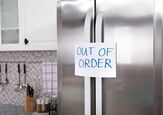











![10 Best Cordless Leaf Blowers – [2022 Reviews & Ultimate Guide]](https://cdn-fastly.upgradedhome.com/media/2023/07/31/9070789/10-best-cordless-leaf-blowers-2022-reviews-ultimate-guide.jpg?size=350x220)
